Global Learning, Digital Global Citizenship and the SDGs – 8 Learning Opportunities for SEND Settings
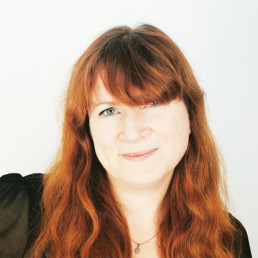
Written by Dr Harriet Marshall
Head of Educational Research at Lyfta and has been a global education advocate for over 20 years, as a teacher, researcher, consultant and education project leader.
The challenge of bringing the outside world into an indoor learning space has had a lot of attention recently as a result of ‘lockdown-learning’ requirements. However, many in the field of global learning have been actively working on this pedagogical task for decades in a variety of ways. Recently, practice has been ramped up a gear, thanks to youth mobilisation to stop climate change, David Attenborough’s chart-busting ‘Our Planet’, the UN’s 17 Sustainable Development Goals (SDGs), and a new range of digital global citizenship education opportunities.
Global citizenship education, sustainable development education or human rights education can be an empowering, enriching, and transformative educational experience. The extent to which UN states also believe this work crucial is manifested in Target 4.7 of the SDGs:
By 2030 ensure all learners acquire knowledge and skills needed to promote sustainable development, including among others through education for sustainable development and sustainable lifestyles, human rights, gender equality, promotion of a culture of peace and non-violence, global citizenship, and appreciation of cultural diversity and of culture’s contribution to sustainable development. (Source: sdgs.un.org)
The 2030 Agenda for Sustainable Development, the resolution adopting the SDGs, pledged to ‘leave no one behind’ and recognises the dignity of all and equality among all. The plan therefore rightly highlights an opportunity to consider complex global issues relating to equality, diversity and inclusion in all sorts of settings – including schools.
There are many ways in which schools are opting to bring in global learning – from school awards (such as UNICEF’s Rights Respecting Schools) to working with regional Development Education Centres to engaging in programmes like the British Council’s Connecting Classrooms. Some teachers are familiar with publications such as Oxfam’s Guides for Teachers on the ‘Sustainable Development Goals’ or ‘Global Citizenship Education’ and so use these to identify a curricular and pedagogic strategy right for the needs of their students. Research hubs such as the Development Education Research Centre (UCL London) have also now established global learning as a credible educational field by researching practice around the world and producing peer-reviewed publications such as the International Journal of Development Education and Global Learning. However, we do not yet know enough about effective global learning practice in SEND settings – but we do know that some exciting and transformative practice is taking place.
An increasingly popular methodology for supporting global learning and empathy-building combines both an ancient pedagogic technique with a modern-day one – storytelling and film making. We believe in capturing human stories through powerful short films which can then be turned into 360-degree interactive spaces for learning. Through this, students and teachers can navigate a virtual globe, explore different countries and visit various storyworlds. The films offer a unique glimpse into someone’s life and/or home and a snippet of how they see their lives and the world at a particular moment in time. No story provides a complete picture of an issue, but it helps bring things to life for students by using real-world examples and themes. Aligning this with lesson plans and resources mapped to the UN’s Sustainable Development Goals will also help build cultural awareness and global citizenship amongst students.
Let’s take a look at some of the ways in which global learning can positively impact students with special educational needs (SEN) and/or disabilities by drawing upon schools already doing this through various global learning methodologies:
- Enhancing independent learning and confidence building: Most case studies and reports emphasise how digital global learning resources can enhance independent learning and build confidence – something educators working with students with SEN have especially noticed and appreciated. One teacher from Elms Bank school has been using Lyfta’s global learning immersive digital stories with her class of students with autism. Although at first sceptical about how students might respond to the international storyworlds and subtitles, she noticed the extent to which the children engaged and empathised with the people featured in the stories and how it opened up opportunities for them. The teacher explained, “it brings the outside world into the classroom without having to go anywhere… it immerses them and engages them in a world which isn’t open to them, which they would find so difficult to be able to go and travel to places and talk to people…it allows them to do that without having to leave a space… without the pressures of unknown and the pressures of communication which might happen, they can become more independent”. Another example relates to how teachers and students are often similarly unaware of the details of global learning issues and this more level knowledge playing field can be empowering for students – offering them an opportunity to lead on topic direction or independent exploration on a range of levels.
- Supporting blended, remote and flexible learning: Global learning through immersive platforms can support a blended learning approach in a variety of settings. Digital resources that offer flexibility and choice about delivery methodology support SEN teachers in their unique settings. From a group of physically disabled students in Finland who have enjoyed the post-viewing discussions after watching real-world videos covering specific scenarios and themes to a UK teacher in an alternative provision setting who found students actually participated thanks to the option of collectively inputting ‘student’ responses to global learning questions (thus navigating obstacles to participation such as the shame felt by ‘poor spelling’).
- A useful opportunity to map, connect and combine different global learning approaches and pre-existing activities: Combining a whole school award with deeper-dive resources can provide the collective overview and the bespoke teaching methodologies required for SEN settings. For example, one teacher from the Venturer’s Academy said “I work with students who require a lot of sensory input to their learning so I’m using Lyfta to support them by creating an immersive learning experience. We are a Rights Respecting School and the platform works alongside this perfectly, enabling me to fully embed the Rights and SDGs across the school.” Other teachers have talked about how the practice of reflecting upon where global learning is already taking place in the school (such as gardening projects for sustainable and healthy lifestyles or international school-linking initiatives) can be helpful in many ways.
- Increasing engagement with physical activity (and other subjects): The UN’s SDGs combined with an immersive digital global learning resources can support PE teaching with children with SEN. For example, alongside the Youth Sport Trust and Lead Inclusion Schools across the country, we created a guide that uniquely connects PE, school sport and health and wellbeing together through immersive storyworlds aligned with the UN’s SDGs. The aim was to provide practitioners with the opportunity to engage young people in their schools that may not have previously accessed school sport, and develop confidence to access new opportunities, with the long-term outcome of increasing take up in physical activity.
- Global learning resources offering a non-sequential (and non-hierarchical) ordering of themes can fit in well with student interests and curriculum topics and priorities. Global learning is a lot about values and attitudes, but it is also about real world knowledge which has been reported as being perceived to be both relevant and interesting by students. Teachers in SEN settings have also talked about how immersive technology and storytelling can be used within a range of subjects, providing links and continuity to support student understanding.
- Global learning and digital global citizenship resources can be a way of teaching across different age-groups. Linked to point 5, opportunities for vertical teaching strategies are often useful when working with mixed-aged groups of students with different needs. The consistency of common themes can also assist in transition work.
- Building intercultural understanding and meeting those from other countries without traveling: One teacher at Rivermead School (post-16 Partnership) said how much she had enjoyed seeing her students engage with resources: “I work with students with SEN and we are a very small provision (seven students) but I have loved seeing their reactions and behaviour during our sessions where we discover new worlds. They are very respectful of other cultures and it is lovely to hear them discuss these later on that week or even a few weeks later.” Another teacher who worked with students with autism said that it was a unique opportunity for students to feel part of the world and meet people from other cultures or countries when they are highly unlikely to in their non-digital lives in the near future.
- A useful pedagogic technique for bringing in PSHE, relationships, challenging stereotypes, life-skills and self-care themes. Storytelling can help reinforce life-skills around subjects such as hygiene and health by addressing these themes but in a different context. The same can be applied to introducing more sensitive topics such as stereotyping and difference.
Prior to 2020, we could not have predicted the vital role remote learning would play in delivering the curriculum and enhancing human connection at a time of physical disconnection. While most evidence here is anecdotal and there is a need for more rigorous research on the extent to which global learning can facilitate a greater understanding of other communities and cultures, there are several educators working with children with SEN who have discovered many reasons to be optimistic. In fact, some settings may even be able to lead the way in developing innovative and useful methods, strategies and pedagogies when working with digital global learning resources.
If you would like to hear more about Lyfta or access free teacher training and trial access, sign up here.
#DiverseEd’s Top 10 Videos of 2020-21

Written by DiverseEd
Diverse Educators started as a grassroots network in 2018 to create a space for a coherent and cohesive conversation about DEI. We have evolved into a training provider and event organiser for all things DEI.
We love to amplify the voices, share the journeys, and celebrate the stories of our community. Our events are inclusive and representative. Our speakers provoke reflection and stimulate discussion by:
- sharing their lived experience;
- reflecting on their classroom practice and curriculum design;
- evaluating the impact of policy changes;
- disseminating strategies for diversifying recruitment and governance.
Last year we hosted:
- 4 virtual conferences
- a #DiverseGovernance series
- a #FastForwardDiversityInclusion series
- Bennie’s book launch
- World Book Day
- A Conversation With…
You can meet our speakers here you can review our events archive here.
Deepening our thinking around DEI starts with who and what we listen to, helping us to develop our confidence and our competence, both individually and collectively. Listening to our community provokes learning through reflection and conversation to help us all understand the breadth and the depth of DEI issues we need to develop an awareness of.
Themes explored in the 2020-21 video collection include: allyship, belonging, coaching, community, culture, curriculum, governance, identity, leadership, mentoring, policy, recruitment, representation, role models, student voice, teaching and wellbeing.
Here are our Top 10 Most-Viewed #DiverseEd Videos in the 2020-21 academic year:
- #DiverseEd Live 2 – Oct ‘20
- #DiverseEd Live 1 – June ‘20
- #DiverseEdGovernance – 14th Jan ‘21
- #DiverseEd Live 3 – Jan ‘21
- #DiverseEdGovernance – 19th Nov ‘20
- Bennie’s Book Launch – 14th Nov ‘20
- #DiverseEdGovernance – 3rd Dec ‘20
- #FastForwardDiversityInclusion Episode 3 – 19th July ‘20
- #DiverseEd Live 4 – April ‘21
- #DiverseEd Live 1: Session 2 (Curriculum) – June ‘20
Thank you to everyone who has spoken at one of #DiverseEd virtual events to date – we appreciate you sharing you experience and expertise with our audience.
Our calendar for 2021-22 is updated regularly here. Please do get in touch if you would like to speak at one of our future events or indeed host us! You can complete our google form for speakers for 2021-22 events here.
#DiverseEd’s Top 10 Blogs of 2020-21

Written by DiverseEd
Diverse Educators started as a grassroots network in 2018 to create a space for a coherent and cohesive conversation about DEI. We have evolved into a training provider and event organiser for all things DEI.
We love to amplify the voices, share the journeys, and celebrate the stories of our community. Our blogs vary from sharing lived experience, to reflecting on classroom practice and curriculum design, to evaluating the impact of policy changes. We published 150 blogs from our network last academic year. You can meet our bloggers here and you can review our collection here.
Deepening our thinking around DEI starts with who and what we are reading, helping us to develop our confidence and our competence, both individually and collectively. Reading the blogs by our community provokes reflection and stimulates conversations to help us all understand the breadth and the depth of issues we need to develop an awareness of.
Themes explored in the 2020-21 blog collection include: allyship, belonging, careers, coaching, commitment, community, curriculum, culture, governance, HR, identity, ITTE, language, leadership, policy, recruitment, reflection, representation, research, safeguarding, strategy, teaching, wellbeing.
Here are our Top 10 Most-Read #DiverseEd Blogs in the 2020-21 academic year:
- How do we deal with racism in the classroom – Hannah Wilson
- How to promote an anti-racist culture in social work – Wayne Reid
- Interactive diversity calendar 2021 – Carly Hind/ Dual Frequency
- How does material deprivation intersect with ethnicity to understand the variations in the achievement among BAME students – Nicole Edwards
- Don’t tuck in your labels – Bennie Kara
- Dear Secretary of State – Hannah Wilson
- Gender is wibbly wobbly and timey wimey and gloriously so – Matthew Savage
- Engaging with diversity – giving pupils a voice – Gaurav Dubay
- Black lives matter, then now always – Wayne Reid
- Breaking the cycle anti-racist plan term 1 – Dwain Brandy
Thank you to everyone who has contributed to our #DiverseEd date and please do get in touch if you would like us to publish you. You can find out more about how to submit here.
Broaden Horizons with Technology

Written by Serdar Ferit
Filmmaker, digital experience designer, and teacher who has won numerous awards and worked in over 20 countries on film, new media and education projects. Co-CEO of Lyfta.
This article first featured in the July edition of Headteacher Update Magazine.
While great strides have been made with LGBTQ+ equality in recent years, there is still so much more to be done to improve how these topics are discussed in school. Teaching children about sex education, human relationships and gender identity is vital to creating more accepting and well rounded global citizens. Education plays a fundamental role here and this is an area about which many teachers are passionate.
As of September 2020, it is mandatory for all English schools to teach an LGBTQ-inclusive curriculum. Educating children from an early age about diversity and equipping them with the skills to better understand and celebrate this is one of the most important things we can teach in schools. It is the key to eradicating discrimination in society and fostering a future generation who are more empathetic and inclusive towards one another.
Teaching pupils, particularly younger children, about Pride and what it means to be LGBTQ+ is sometimes perceived as a thorny subject. Sex education should be treated with sensitivity in schools, to ensure that children feel safe if they wish to open up and express themselves. It’s vital to equip teachers with the resources and skills that will help them confidently teach diversity in the curriculum and usualise it as a subject for children. Sharing real-life stories from people who come from different backgrounds can be a powerful way for schools to approach this. Hearing people share stories of their own lived experience, helps to nurture empathy and understanding and can make sensitive themes such as inclusivity and sexuality easier to understand.
When these real-life, story-based lessons are presented in an immersive way, the impact is even greater, offering an incredibly powerful and engaging way to introduce children to different themes and allowing them to explore new cultures and perspectives which they otherwise might not experience. This is especially powerful when teaching an inclusive curriculum. Some pupils might have never met someone who is openly LGBTQ+, or they might have even witnessed, or been subjected to, negative stereotyping and homophobia. Sharing human stories with pupils through an interactive, 360° learning environment gives them the freedom to explore and hear first-hand from people whose lived experiences can help broaden understanding and foster inclusivity.
Immersive storytelling platforms like Lyfta allow schools to take pupils on virtual trips, for example to Curacao in the Caribbean, where they can hear from Qwensley, a young gay man living in a conservative Christian community. Children explore what it means to Qwensley to be part of the LGBTQ+ community and the challenges he faced, whilst discovering the power of resilience, empathy and acceptance. Introducing children to multiple perspectives, and demonstrating diversity will not only help to broaden pupils’ horizons and sense of cultural capital, but will also equip them with the knowledge and confidence to express their own identities and be proud of who they are. Human storytelling enables teachers to bring depth, breadth and meaning to sensitive and complex concepts for children and can create a safe space for the class to discuss and engage with the themes.
With the coronavirus pandemic limiting travel and close human interactions, speaking to children about diversity around the world is more important than ever. Technology is a wonderful tool for broadening students’ horizons, bringing human stories to life and helping to develop more confident, empathetic and globally-conscious thinkers who will go on to make a positive impact in the world.
You can find out more about Lyfta and sign up for free training and trial access here.
The National Curriculum - What Needs to Change?
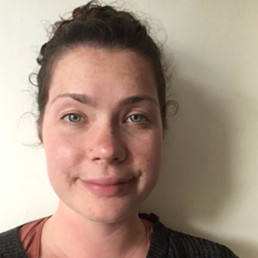
Written by Molly Burbridge
Molly is a teacher based in Greater Manchester, she founded AC in September 2020. She has a BA from Manchester University in American Studies.
Why is the national curriculum so limiting?
The national curriculum determines what is taught in our schools and colleges. It not only establishes who deserves to be celebrated in our country’s classrooms but also which students are represented. The content of our curriculum, the privileging of some forms of knowledge and aspects of lived experience over others and even pedagogical practices themselves serve to prioritise some voices and marginalise or silence others.
Even though educational establishments are required to abide by the Equality Act of 2010 our national curriculum does not reflect the nine protected characteristics equally. There is no requirement to learn about how institutionalised racism impacts our society; most authors of GCSE English texts are White heterosexual cisgender men; there is little scope for the celebration of the diverse array of cultures and identities that exist in our society. Even in PSHE, a subject that can be considered to have the most freedom to explore topics relating to the nine protected characteristics, is curtailed by DfE guidance limiting the external visitors that can support the delivery of a PSHE curriculum to disallow those, ‘promoting divisive or victim narratives that are harmful to British society’ (https://www.gov.uk/guidance/plan-your-relationships-sex-and-health-curriculum#using-external-agencies). This has been seen as an attempt to limit educators from teaching about activist groups such as Black Lives Matter and Extinction Rebellion (https://www.theguardian.com/education/2020/dec/15/education-department-to-review-schools-guidance-on-anti-capitalist-groups?__twitter_impression=true). It would be an impossible task to effectively teach about the nine protected characteristics of the Equality Act of 2010 without discussing the actions taken by marginalised groups to fight for equality however the DfE seem to be trying to prevent this.
Why does a representative curriculum matter?
Lack of representation or misrepresentation prevents society from progressing. When harmful, inaccurate or ignorant portrayals of groups of people exist in the media or cultural industries it leads to discrimination and harassment. If students don’t see themselves represented in topics they learn at school whether that be due to their race, gender identity, sexual orientation or disability then it becomes a barrier to achieving a sense of equality in schools. A lack of representation can also perpetuate existing inequalities that exist in society. Pupils who belong to groups that hold power in society are not given an opportunity to locate themselves within this position of power in society and are therefore not encouraged to consider how they benefit from it and what they can do to promote equality.
How we want to make a change!
Here at Alternative Curriculum, we want to widen the educational conversation and deepen an understanding of many subjects that are often airbrushed out of our national curriculum. We create free online resources that can be used by teachers in their classrooms, parents/carers as learning tools at home or young people as an opportunity to widen their cultural capital. Our aim is to amplify diverse voices and give young people the chance to learn about the varied histories, cultures and communities that have contributed to society. Our lessons focus on minority groups and those whose histories and cultures are not as thoroughly covered in the mainstream curriculum, with lessons on various topics within areas of history, science, media, literature, cultural studies and more. Example lessons so far include:
- ‘Pride’- KS1: https://www.alternativecurriculum.org/pride-3/
- ‘Racism, Inequality, Cultural Pride and Revolutionaries’- KS3: https://www.alternativecurriculum.org/racism-inequality-cultural-pride-revolutionaries/
- ‘The World’s Wife’- KS4: https://www.alternativecurriculum.org/the-worlds-wife/
- ‘Irish History’- KS5: https://www.alternativecurriculum.org/irish-history/
We have even started creating adult resources as it’s important that we continue to educate ourselves and continue the conversation around anti-discrimination and equality. Here are some examples of our adult resources:
- Disability Rights in the UK: https://www.alternativecurriculum.org/disability-rights-in-the-uk-2/
- Kill the Bill: https://www.alternativecurriculum.org/kill-the-bill/
As conversations around the creation of a diverse and representative curriculum continue we hope that it is prioritised in classrooms across the country. Until then we will keep creating resources that amplify and celebrate unheard voices and change the narrative or our national curriculum.
Reflections on Improving Diversity and Inclusion in Science Teaching
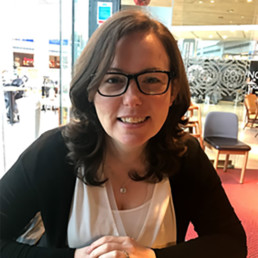
Written by Suzanne Wood
Chemistry teacher in an all girls school in London.
“Think of a scientist… imagine that scientist in your mind, imagine what they look like, what they do at work, the clothes they wear…. Now imagine them at home with their family, think about what their family looks like.”
I often start my year 7 and 8 classes with this exercise at the very beginning of the year. I ask them to draw a picture of the scientist and their family. Around 95% of them draw an old, white man with slightly fuzzy hair wearing a lab coat, his wife and their two children. It is always clear that the prevailing idea of scientists as straight, white men is still dominant in today’s society.
Looking at the numbers working in science careers, it is easy to see why. Despite there being over a million women working in science technology, engineering and maths (STEM) careers, this still represents only 24% of the work force1. More worryingly, black students represent only 6.2% of university entries on STEM courses2 and LGBT+ people are 20% less represented in STEM fields than expected3. The number of people with a known disability working in STEM subjects is far lower than those working in non STEM fields4. Yet, there remains a well documented skills shortage in this industry, costing around £1.5billion per year, coupled with a continued growth in jobs year on year5. It is clear therefore that the argument for the improved representation amongst minority groups in science is not just a moral one but also an economic one.
Discourse on diversifying the school curriculum frequently suggests that this is significantly more challenging for science or maths compared with English, history or the arts6. But as we know, you can’t be what you can’t see, and with this in mind, I personally took on the challenge of leading the science department to decolonise and diversify our curriculum. My aim was to reflect back to our students a vision of science that included them and their many and varied individualities. My project was ambitious, I created diversity resources for all three sciences across key stages 3 and 4 for each unit of learning. These were integrated into the existing curriculum for teachers to use. Examples include challenging our year 7’s perspective of families by exposing them to diverse ways of having children when studying reproduction, or introducing year 8 to Stephanie Kwolek, the woman who invented Kevlar when studying materials. We explore why female only pairings are beneficial to some species in GCSE Biology and the inequalities that exist as a result of climate change in GCSE Chemistry along the work of Stephen Hawking in GCSE Physics. We celebrate black history month in science with year 7 & 8 by looking at the life and contribution of Henrietta Lack’s HeLa Cells and in year 12 Chemistry and Biology we discover how the first HIV drugs were designed during LGBT+ history month. I found, when you scratch the scientific surface and get creative, you can quite easily find rich and varied examples of diversity and inclusion.
An added layer to this project was my realisation that we needed a significant and sustained culture shift within the department to put diversity and inclusion into the forefront of our teaching and learning strategy. I worked with teachers to help them understand the importance of their role in this by inviting them to attend a whole school CPD session that I ran on supporting LGBT+ students and why this was essential in terms of student wellbeing. I worked with the department to evolve the learning environment and make it more inclusive. Our science class names were changed to reflect a diverse group of scientists and time was built into our teaching schedules for diversity to be celebrated. These changes have had a significant impact on teachers and our students. A recent staff survey demonstrated that 100% of the respondents felt that diversity and inclusion is an important aspect of their teaching role and most teachers (90%) feel confident delivering this within the department. Student surveys have also revealed that pupils enjoyed learning about diverse science and that they saw this as an important aspect of their science education. Since these changes, staff have told me that students seem more at ease with starting conversations with them that have diversity and inclusion at their core and I see this as a positive outcome. Personally, the biggest change for me is that diversity and inclusion is now a collective effort for the entire department. It is no longer just me talking about this, but all of us.
- https://www.stemwomen.co.uk/blog/2021/01/women-in-stem-percentages-of-women-in-stem-statistics
- https://www.stemwomen.co.uk/blog/2021/03/bame-women-in-stem
- https://blogs.imperial.ac.uk/imperial-medicine/2019/02/27/stem-needs-to-face-up-to-its-problem-with-lgbt-diversity/
- https://royalsociety.org/-/media/policy/topics/diversity-in-science/210118-disability-STEM-data-for-students-and-staff-in-higher-education.pdf
- https://luminate.prospects.ac.uk/the-uks-stem-skills-shortage
- https://www.runnymedetrust.org/uploads/publications/pdfs/Runnymede%20Secondary%20Schools%20report%20FINAL.pdf
An Anti-Racist Approach to Physical Education
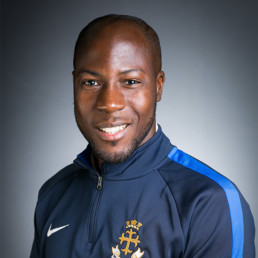
Written by Mo Jafar
I am currently Head of PE at an all boys school in East London. I have been appointed Subject Lead for PE at the Havering Teacher Training Partnership.
It can be difficult to recognise how your practice can have a detrimental effect on Black people if you are unaware of the issues Black people face. It could be argued that a lack of Black people in middle leader positions in Physical Education can have a profound effect on the experience young Black people have in PE and this lack of representation is one reason why organisations such as BAME PE are so important.
There are the classic stereotypes with regards to athleticism and power that are associated with Black people in sport and physical activity but what if you do not fit this model? If you are a Black girl in PE and not athletic what does PE offer you? Conversely, if you are athletic and Black how does this narrow your opportunities or change the way you are treated in PE?
These are important questions and unfortunately may never be addressed if we don’t bring them to the table. As stated by Clark (2020) “People in power are pragmatic when working on behalf of those that don’t have it”. Clark’s comments are from a paper he wrote last year based on applying a critical race theory pedagogy towards Physical Education.
Below I have highlighted some examples of how we might break through this pragmatism and actively adopt an anti-racist approach to Physical Education. I discussed this back in April on the PEPRN podcast by Dr Ash Casey which can be found here.
#1 The Changing Room
If you understand the black body you will know that moisturising is a religious art. How does this relate to PE I hear you say?
The changing room is rife for ridicule and if someone has forgotten to moisturise their legs then they are now a target for verbal abuse from peers.
If I noticed this happening over a number of weeks I would raise this with my designated safeguard lead as to me it’s not as simple as they have just forgotten. It might be the start of a thread that unravels later down the line.
As a Black person this type of issue is in my immediate attention but I’m not sure that it would be for others. Furthermore, the people in charge of designing and delivering safeguarding training are predominantly white and may not have this knowledge.
Including insights such as this in safeguarding training would not solve all the problems of racism but it may well be a start.
#2 Swimming and golf: limited opportunities
According to Swim England, the sport’s governing body, 95% of black adults and 80% of black children in England do not swim, and only 2% of regular swimmers are black. See Guardian article here and also the short documentary film by Ed Accura “Black’s Can’t Swim” on YouTube.
Having an acute awareness of the impact race has on an activity like swimming could encourage PE subject leads to be creative and ensure swimming for black pupils is a necessity and not a luxury. These statistics show there is a huge gap that PE can and should attempt to fill.
Another example came from a recent parents evening as one parent made me promise to offer opportunities for black boys in sports like golf.
Not all places feel accessible for black people or are experienced the same way as their white counterparts and for a long time I wouldn’t have felt it was my place to explore golf as a black man let alone a young black boy from East London.
We can change this by committing to offering young black people the opportunity to explore environments like golf and break down the idea that it is not their place to be.
Storytelling…As a tool for change
As PE teachers, the challenge now is to ensure that young black people (and all young people really) have the opportunity to experience a range of activities that historically and for a variety of reasons may never cross their radar.
It’s about knowing the people in front of you. Trying to understand all of their complexities as individuals, whilst appreciating their socio-cultural constraints and the role racism can play on a day to day basis.
Lastly, listening to the stories of Black people without judgement and acknowledging that you may not fully appreciate the world they experience could go a long way to enriching the PE experience. For a more in depth reading on this topic and other PE related posts please visit my blog site teaching2move.wordpress.com
References
Langston Clark (2020) Toward a critical race pedagogy of physical education, Physical Education and Sport Pedagogy, 25:4, 439-450, DOI: 10.1080/17408989.2020.1720633
Developing an Anti-racist Curriculum
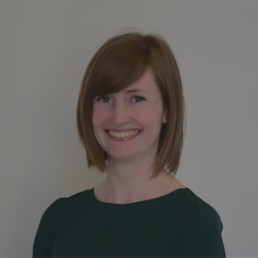
Written by Louise Holyoak
Head of Geography (Co Leader of Humanities) at School 21 in Newham, London.
Reflecting on the concepts of ‘tokenism’, ‘single story’ and ‘the Other’
At School 21, we are thinking deeply about diversity, equity and inclusion. This is multi-faceted, complicated and often difficult and uncomfortable work. We hope to share much of what we are doing over the coming months.
One of the many areas of focus is, of course, our curriculum. On an INSET day in January, we dedicated a whole day to explore diversity in our curriculum. One way to develop an anti-racist curriculum is to consider the concepts of ‘tokenism’, ‘single story’ and ‘the Other’ and reflect on how these may appear.
Here are some ideas, concepts and questions we used to help refine our curriculum offer.
Tokenism
Is the practice of making a superficial effort to include a diverse range of stories or representation within a lesson or scheme of work. The resultant activities are likely to be presented out of context, lacking in significance and at worst, can perpetuate stereotypes about particular groups.
An example of this in the classroom would be to mention the Ivory Bangle Lady in a lesson about the Romans without any context and failing to explain how she is significant in our understanding of a diverse, globalised Roman Britain.
Avoiding tokenism
- Are diverse stories woven into your curriculum plans, or are they considered an additional extra?
- Are diverse stories taught inconsistently across your team e.g. by one member of staff only?
- Are your current examples of diverse stories in your curriculum a result of requests to ‘do something for Black History Month’?
- When introducing aspects of other cultures into your curriculum, is this done in a superficial manner or is the historical and cultural context explained to students?
Single story
Is a concept to describe how a complex narrative may be simplified and repeated without nuance, leading to stereotypes being embedded in students’ minds. Chimamanda Ngozi Adichie explains how this happens and outlines the consequences of allowing single stories to go unchecked. An example of this would be to only teach about slums and poverty in India, without considering India’s rapid economic development and subsequent wide range of incomes and lifestyles.
Avoiding the single story
- What are the single stories represented in your curriculum?
- How can these be countered?
- Are these challenged within the topic or across topics?
- Are you actively working on developing your subject knowledge to add complexity and nuance to the claims made by outdated resources?
- Do you offer students the chance to critique the teaching materials used and the narrative they present?
The Other
Is the reductive action of labelling another person or group of people as existing outside social norms or power structures and/or lacking in agency in decisions relating to them. An example of this in the classroom would be to consider the indigenous tribes of the Amazon Rainforest as silent victims of deforestation who are to be pitied, without considering the activist work and campaigns carried out by this group.
Another example is to consider the difference between these two videos and how they represent charitable aid projects. Both are created by Oxfam, however the first represents aid recipients as the Other, as the experience of British charity donors is centred and narrated throughout. By contrast, this video centres local aid distributors and recipients by allowing them to speak throughout.
Avoiding the Other
- Who is being othered in your schemes of work?
- Are there elements of your curriculum that may inadvertently other your students?
- Do you assume a common point of view or cultural reference when teaching?
- Do the people being studied have a chance to speak for themselves, whether through visits or watching YouTube videos that centre people within the community?
Case study: Anti-racist curriculum development in Geography
At School 21, we are committed to creating a geography curriculum which ‘supports students and young people to develop the knowledge, critical thinking and imagination to foster anti-racist and environmentally just futures’ (Puttick and Murrey, 2020). Engaging with the concepts detailed above are necessary in order to achieve this aim, and we strive to do this across all of our schemes of work, from KS3 to GCSE and A-Level.
One way I have attempted to avoid tokenism is to build entire schemes of work around fertile questions which allow students to explore complex issues in depth. The first geography topic year 7 students studied this academic year was centred around the question ‘Why is Newham the most diverse borough in London?’ This allowed students to explore changing migration patterns into Newham, and explain how this was driven by structural economic change in the area. I used Terraformed by Joy White as a grounding text, and structured our Scheme of Work around the themes in Chapter 1: Newham Past and Present. Reading Terraformed allowed all teachers in the department to contextualise Newham’s historic migration within its present landscape, and served to ensure they had the subject knowledge necessary to teach this unit.
To avoid reinforcing the single story that diversity in Britain began with the arrival of the Empire Windrush, I included a task in which students compiled an overview of migration into the area, beginning with the Huguenots in the 17th Century. I planned this using McGlynn’s (2015) summary of demographic changes and historical migration trends. Students were able to examine how the area we now call Newham has a long history as a diverse community and home to people from all over the world.
Following the broad overview, I then zoomed in to focus on post-war migration to Newham.
Students learnt about the push and pull factors driving migration from countries including Barbados, Somalia, Bangladesh and Poland. These were chosen to reflect the heritage of many of the students in the year group and was an attempt to avoid Othering any individual communities. Next year, I plan to build in opportunities for the students to explore the migration stories within their own family history.
I have chosen this example to highlight the various steps of designing a scheme of work which addresses tokenism, single stories and the Other. In summary, these were avoided by considering the demographics of the students and using core texts at the point of curriculum design. Furthermore, we ensured consistency of subject knowledge across the department by providing these resources to the class teachers. Feedback from the students was positive, and I look forward to developing this unit for teaching next academic year.
A Curriculum for Diversity and Inclusion
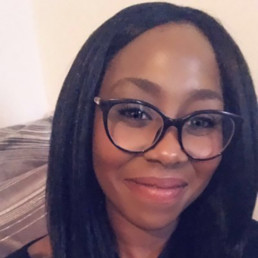
Written by Andrea Silvain
Andrea Silvain and Sarah Seleznyov are co-headteachers of School 360, a brand new primary school in Newham that is part of Big Education.
What if you could tear up your curriculum and start again? What if you could design a curriculum from scratch that had inclusion and diversity at its heart?
As Co-Headteachers of a brand new school, School 360, we are lucky enough to have this opportunity but we have to admit, it has been a complex and challenging process. We don’t think we have all the answers, but we do hope we are asking the right questions.
Question number one: What do we each bring to the table, both in terms of experiences and biases?
We come from two very different backgrounds. Sarah was brought up in a tiny village in Wales, went to a very ordinary comprehensive school, and then ended up as a fish out of water at Oxford University. She is passionate about breaking the cycle of elitism and sees education as a way to empower disadvantaged communities, and to enable social change. Andi was born in Newham and raised in East London. She faced a number of challenges to achieve academic success in an education system that was not designed for her to do so. She has a vision for an education system that is equitable. One that recognises, values and rewards students as multifaceted human beings.
As Co-heads we do what it takes to ensure that our vision is clearly understood and shared between us. We openly acknowledge and respect that we approach issues from different life experiences and will therefore have different perspectives and different levels of objectivity. However, one thing is clear to both of us: we want to make anti-racism a priority, and set it at the heart of the school’s mission. If it’s a half-hearted add on, it will fail.
Question number two: How can we avoid systematic bias in our recruitment of teachers and other staff?
Andi’s experiences as a black school leader and Sarah’s work on the Stepping Into Leadership project, have helped us reflect on how we can avoid bias in our recruitment and promotion processes. We are currently recruiting for a teacher and have taken steps to ensure our job advert encourages diverse applications, by including a specific statement of intent to welcome applications from black and minority ethnic applicants, and those seeking job shares. We want to listen and find out what a safe and welcoming environment feels like for black and minority ethnic teaching and support staff. We are considering a stage in the interview process that looks at commitment to antiracism, equity and inclusion. We have noted that eyes tend to focus on the name of the university that an application attended, and feel this may be limiting our openness to good candidates, so are keen on university-blind applications.
Finally, we are keen to have our application process critiqued by a wider group of teachers in the black and minority ethnic community once it has been put in motion, to see if we succeeded in our goal to be inclusive, and to generate ideas on what more could be done. But the work won’t end at recruitment. We know that bias demonstrates itself in progression to leadership, since school leaders often rely on the ‘tap on the shoulder’ approach, nudging people they recognise and can relate to, into leadership roles. We know we need to keep this in check and plan to offer training for staff on recognising and avoiding bias, and how to have proactive discussions about race.
Question number two: How can we avoid systematic bias in our relationships with families?
Step one for us with this goal is to create an action plan with short, medium and long term goals for becoming an anti-racist school, like the one being developed with the School 21 team. As Big Education grows the number of schools in its family, this work should really expand to a working group across the Trust, ensuring the schools learn from each other and can hold each other to account for progress and setbacks.
As we take in our first cohort of children, we plan to survey parents to understand the experiences they have had so far with schooling either for themselves or their children. Once we know about what brought them joy, the challenges they faced and what supported them in moving into successful adult lives, we can develop a curriculum that supports them and their children in moving forwards.
We have a purpose built parent room and community kitchen in the new school, and are carefully considering how we might use this space to promote social cohesion, changing the narratives of class and race and individual potential and thereby truly enabling our students’ futures. We are exploring the possibility of a Community Cafe: a place at the heart of the school creating a heart for the community, a place to both meet the needs and realise the gifts of the community.
Whatever happens in that space, and in our wider work with parents, we need to operate on the principle of mutuality. The name School 360 captures our intent to be at the heart of the community, both inward and outward facing, both offering and receiving from the community. We are keen to engage parents and community partners in all aspects of the curriculum. Local residents could host a talk, lead a course or put on a special event. We have as much to learn from the community as we are able to offer them.
Question number three: How can we make sure every child feels equally valued and included?
Andi watched this Ted Talk by author Chimamanda Ngozi Adichie and she was struck by how much it resonated with her own philosophy about storytelling. Chimamanda speaks about stories as the connection between humans as equals, which is at the heart of humanity. She sees the dominant story being told as a manifestation of power, and articulates the danger of only hearing a single story.
As one a family of schools focused on oracy, School 360 wants to place a particular emphasis on storytelling. We want our curriculum to ensure that children’s home cultures are integrated with school culture and for children to develop empathy and understanding of different cultures. This will be deliberate through the books we choose, the representations we share, the pride we instil and the stories we share. Storytelling as a pedagogy will help facilitate this, as children are supported to explore, articulate and share their own stories with the passion and enthusiasm these stories deserve. Inspired by the award winning Ancestors Unknown project for secondary schools, we want children and families’ stories to sit at the heart of our curriculum.
School 360 children are the decision makers of the future. We want the education we provide to be transformational in a positive and long lasting way. We need the right team to bring this vision to life, and that team has to represent the community we serve. It’s a project in process, but watch this space – School 360 has grand and important plans!
To find out more about the new school, join one of our New School, New Thinking sessions, sign up for our newsletter, respond to our consultation, or apply to teach at the school.
DEI: An Anti-Racist Approach
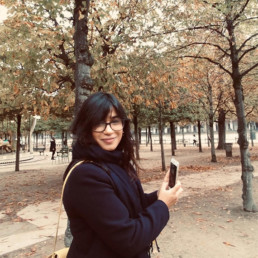
Written by Hana Malik
Hana Malik is currently an Associate Senior Leader, Head of English with a passion for social justice, diversity and equity.
It is rare that a school staff body will arrive at the same conclusion, at the same time, but it does happen and when it does, change becomes a moral imperative. Almost one year ago now, the majority of staff at my school met over zoom to discuss what could be done to move forward from the point at which we had arrived: the undeniable lived facts of institutional racism, which had been reiterated through the shocking and inhumane murder of George Floyd. Although our experiences, and that of our students, of living within a society whose structures determined obstacles, interventions and successes are different to that of our allies in the US, the moment we were now in was not too dissimilar. Disbelief. Exhaustion mingled with renewed faith. A quiet hope that this time, maybe, things would start to change. Perhaps, starting in our corner of East London, we could start to rebuild and begin to see a more equitable reality.
Getting People Talking
A few years ago, myself and a few close colleagues made the trip up to Aureus School for our first Diverse Educators conference. Inspired and buoyed, we quickly established a ‘#DiverseEd’ discussion group at our school. This has been running since then and last year it provided the platform for all staff to get talking.
The #DiverseEd session we facilitated soon after George Floyd’s murder is something I will not forget. Staff shared their personal experiences: there was no diversity in our leadership; there was sadness in delivering a curriculum to young people which was not representative; there was disillusionment that an inequitable education system could not be changed and there were many silences – heavy realisations that we had all been aware of these issues, and yet had not done more to improve things for our students or our colleagues. Important as well was the presence of the range of stakeholders including support staff, deputy headteachers and middle leaders.
These conversations have continued with staff members not afraid to sit for a while with their discomfort. As well as the #DiverseEd discussion group, we run an Anti-Racist Reading Group and each half term we encourage staff to read (watch or listen) to a key thinker. So far, we have explored ideas from individuals such as Kendi, Akala, and Eddo-Lodge. Highlights are shared with staff and students so that we can constantly underscore the importance of listening, questioning and unlearning. And, as the work, while incredibly difficult and often nebulous, continues, we know that if we keep listening and learning, we will continue to move forward.
Keeping People Working
Our East London school is a place where teachers are proud to work, and students are inspired to flourish. This has never been truer than in this last year. We have introduced new initiatives to establish DEI as part of our everyday practice and care.
As part of the pastoral curriculum, we have introduced a Community Calendar. This additional provision works on several levels. Not only does it expose students (and staff) to a range of celebrations and events, but it also encourages students to lead on sharing elements of their identity thereby feeling more and more like they belong. For example, we have collectively recognised Diwali and World Hijab Day; students got involved in creating assemblies, resources and leading their forms in celebrations. Within this we have also explored anti-racist vocabulary (such as privilege and microaggressions), run extra-curricular activities working with external parties such as The Black Curriculum and undertaken readings of ‘Black and British’ by David Olusoga to create a shared timeline of history.
While the pastoral curriculum offers regular and meaningful touchpoints to diversity and inclusion, heads of department have also begun reviewing their curriculum and teaching and learning (T&L). An evaluation of KS3 has led to changes to texts being taught as well as additions to texts (parallel or juxtaposing) to ensure students see learning as a supporter of diversity. Integral to this has been establishing a clear approach to DEI. We ensure our provision Represents, Reframes and empowers us to be Anti-Racist. This is supported through weekly T&L tips, specialised coaching, an action research group and DEI Champions.
Overall, we have seen an increase in student achievement points, student leadership points, development in schemes of learning, teachers feeling more confident in delivering and talking about key issues, and increased collaboration amongst staff. However, the most important thing we have achieved this year is putting into action some of the things we discussed last year. We have managed to find a way to keep DEI at the heart of what we’ve done (while also juggling all the usual school balls). We were clear about our commitment to change and we have remained committed to that change, and although there is a lot of work yet to be done, I know we will keep talking and working in our corner of East London.

